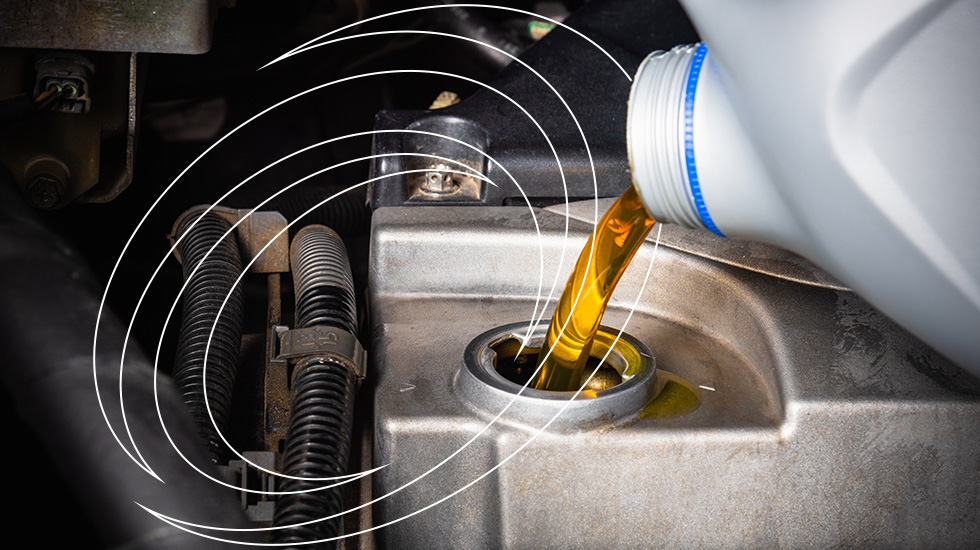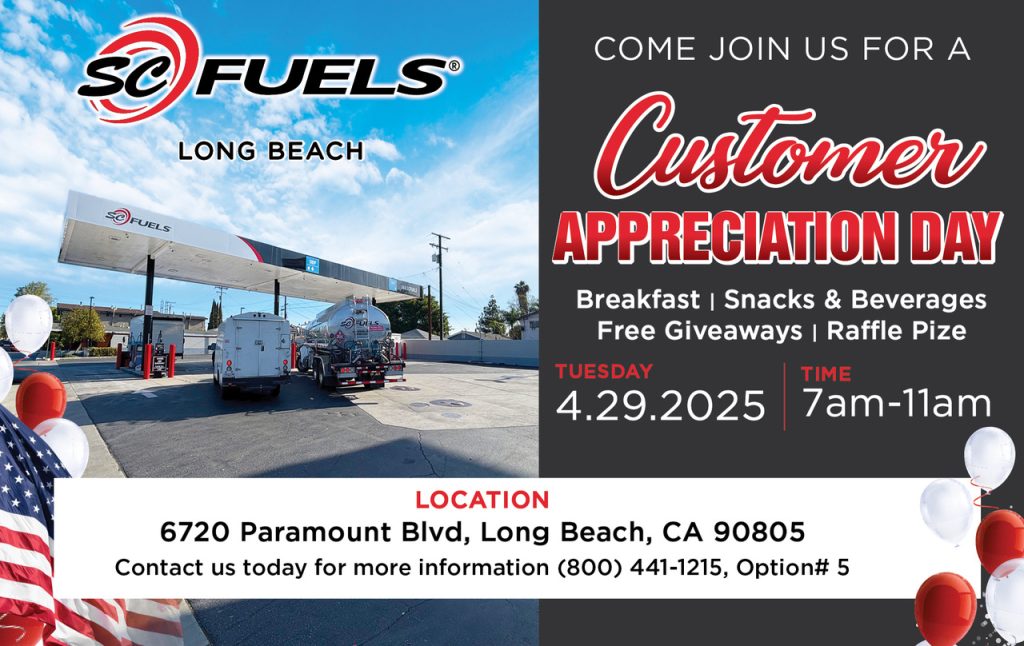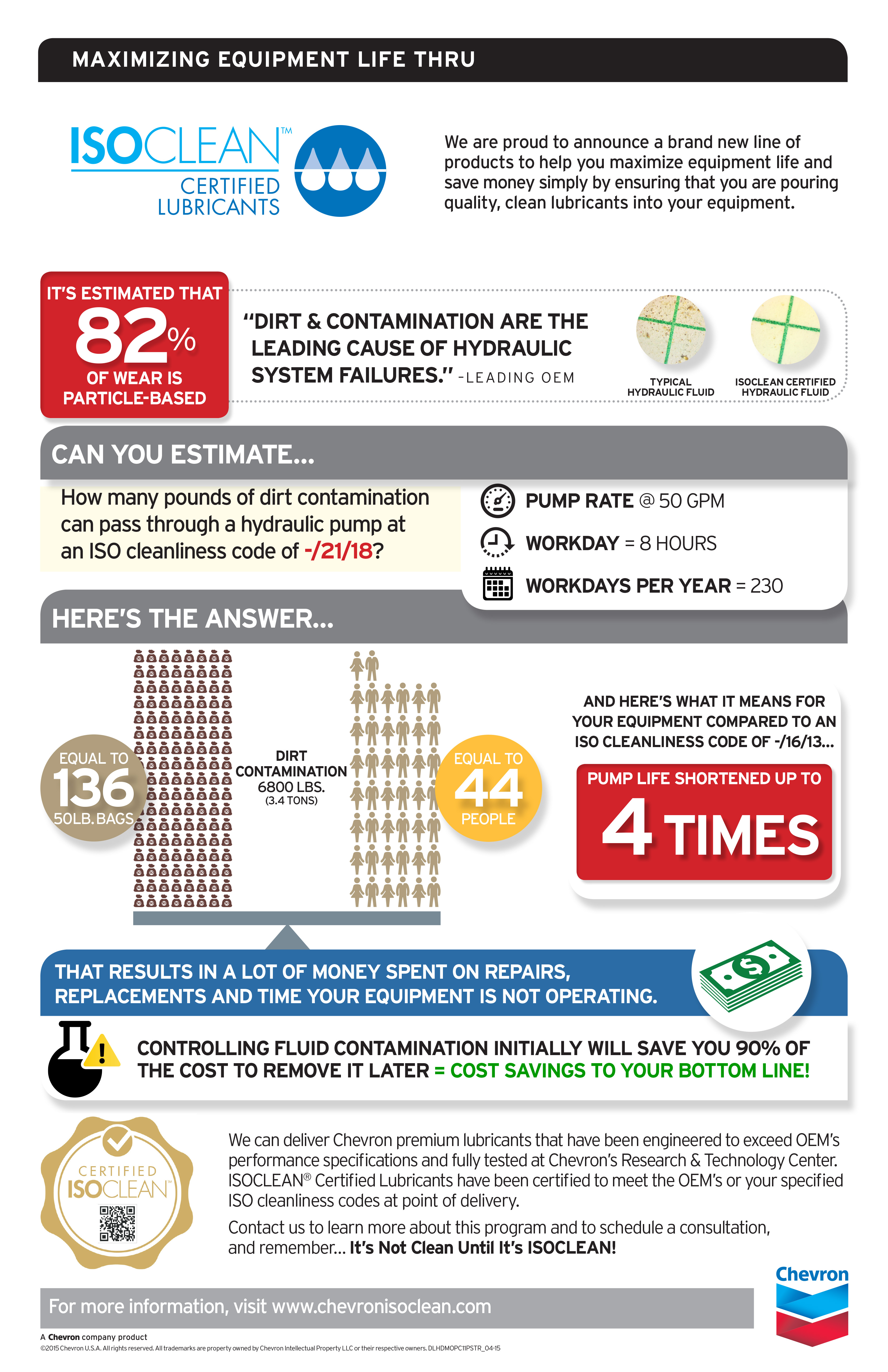The proper amount of lubrication ensures system functionality and efficiency. Too much or too little lubricant can result in heat or friction, creating drag that can damage seals and other parts. Automated lubrication systems deliver the appropriate amount of lubricant safely when the system is moving, preserving component integrity and keeping performance at its peak.
Basic Components of a Lubrication System
Regular lubricant application is critical for systems with moving components, playing a role in attaining maximum system efficiency, life span, and uptime. Automated lubrication systems use a range of basic components to deliver adequate lubricant to assemblies. You can also find accessories to complement or enhance the system’s operation to better suit your applications. Basic components include:
- Metering device: The metering device prevents fluids from only moving to one location. This device ensures lubrication is evenly distributed throughout the system.
- Pump: This component actuates the metering device by providing the flow of fluid under pressure. Different pumps offer various pressure ranges and flow rates, so your pump selection should meet your needs. Some pumps also feature meters, and pumps with injectors will include a vent valve.
- Controller: A controller dispenses lubrication regularly by running a program or schedule. Some units have pumps with built-in controllers, but many systems utilize a separate unit. You can program controllers to suit your needs, allowing them to cover a range of applications.
- Tubing and fittings: You must select the right tubing for your system because it must be able to withstand the pressure generated by the pump. Tubing also needs to have a sufficiently large diameter to allow the fluid to flow through without creating excessive pressure. Weak tubing could burst, and overly narrow tubing may prevent the system from functioning due to high amounts of pressure.
- Optional components: You can find optional components to enhance your system and accomplish specialized tasks. These parts may include check valves, filters for air or fluid, or pressure sensors to detect pressure.
Types of Automated Systems
Your application requirements will determine which kind of automated lubrication system represents the best investment for you. A few of the most common designs are:
- Single-line parallel: This system has a central pump for distributing fluid through a single supply line. Despite having adjustable injectors, this system is not suitable for cold conditions, long supply runs or heavy lubricants.
- Double-line parallel: These systems have two equal lines and use hydraulic pressure to distribute lubricants in timed injections by cycling movable valves. A double-line system empowers you to manage many lubrication sites from a distance while using less pipe or tubing.
- Mist lubrication: Mist lubrication provides cool bearing activity and low oil utilization. Low-pressure air moves the mist through the system to the necessary components.
- Multiport direct lubrication: This system is easy to construct and has a direct pump to the lubrication point. A multiport system will dispense lubricant by having the external controller activate the drive motor, which turns and engages the injectors and direct pump components.
- Single-line progressive system: These systems can identify blockages by monitoring single points and support various control and motoring options. Single-line progressive systems require complex tubing and piping.
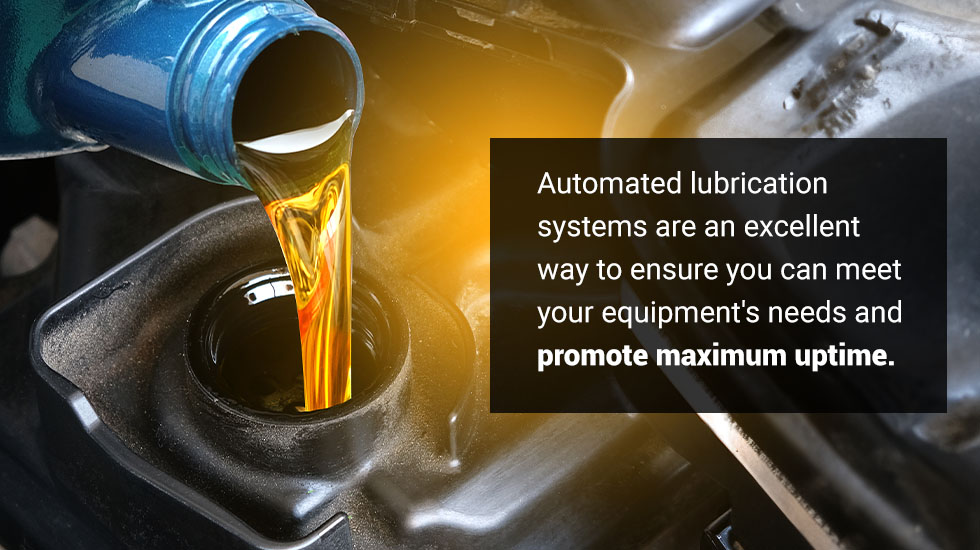 Benefits of Automated Lubrication
Benefits of Automated Lubrication
Automated lubrication systems are an excellent way to ensure you can meet your equipment’s needs and promote maximum uptime. For that reason, you will often find them in demanding industries such as chemical processing, mining, food processing, petrochemical and industrial plants. You can also use these systems for heavy-duty or free-standing equipment.
Investing in automatic lubrication solutions can extend equipment life and efficiency and offer numerous other benefits.
Reduce Wear and Extend Equipment Life
Maintaining the proper amount of lubricant will keep equipment running better and longer. Adequate lubrication forms a layer between moving components — without this protection, they will scrape against each other, resulting in early wear and harmful particulates being circulated through the system. By preventing this contact, you keep the danger of premature wear to a minimum.
Additionally, having a tool in place to apply lubricant for you can minimize downtime. Adding lubricant to a cycle manually takes time, and you often need to shut off equipment to administer the fluid. Automatic systems ensure your equipment receives lubrication as needed without unnecessary shutdowns. This solution saves time, enhances productivity, and provides a safer method for delivering lubricant to your equipment.
Lower Maintenance Costs and Repairs
Because proper lubrication reduces wear, it helps you save money on replacement components and repair services. These systems empower your equipment to operate at peak performance while preventing breakdowns that can delay your processes. Furthermore, automated systems ensure the equipment does not experience an overload of strain or stress, which can lead to premature damage or wear.
Preventing these premature breakdowns will lower the frequency with which you need to purchase replacement parts or request repair services, saving you money.
Lessen the Chance of Contamination
Any time a sealed system is opened for any reason, there is a chance of it being contaminated by particulates or other harmful elements. Automated systems measure the precise amount of fluid your system requires and administer it on schedule and without external input. Because you will not have workers manually applying lubricant, the risk of human error and contamination is greatly diminished, promoting better health for your components.
Decrease Waste and Expense
Too much or too little lubrication can damage seals or create wear, heat or drag. Relying on manual lubrication processes is more likely to result in these outcomes than automatic systems, as the latter will deliver the precise amount at appropriate times.
Additionally, proper lubrication for chains, gears and bearings results in less friction during operation, which translates to lower energy consumption and subsequent environmental benefits.
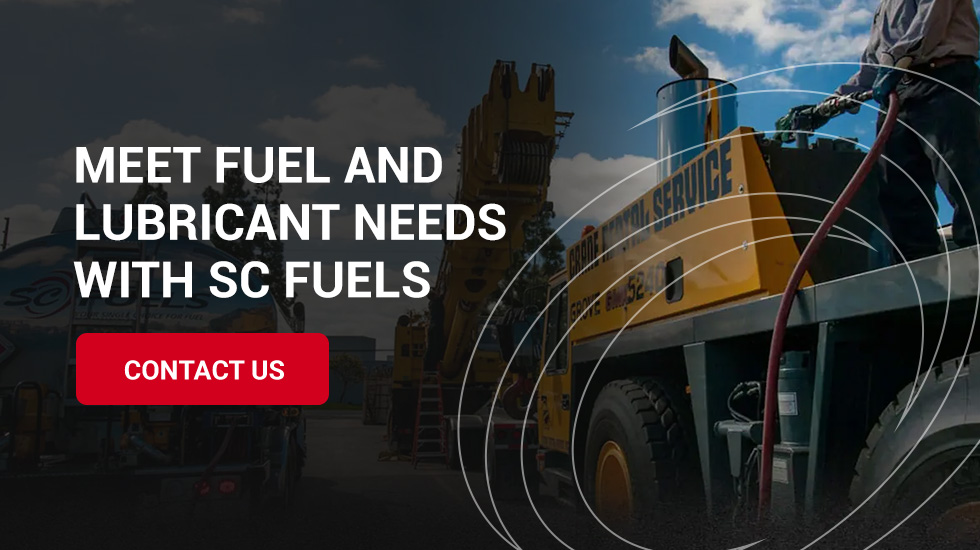 Meet Fuel and Lubricant Needs With SC Fuels
Meet Fuel and Lubricant Needs With SC Fuels
SC Fuels serves more than 11,000 customers each year and is one of the largest family-owned petroleum product distributors in the country. We offer competitive prices for delivering lubricants, gasoline, diesel fuel, and other fluids. If you need a hassle-free solution to keep your automatic lubrication systems doing their job, we can help.
We offer comprehensive services to ensure you can find everything you need in one place. With us, you can request unbranded wholesale fuel delivery, on-site fleet fueling, cardlock fleet fueling, branded wholesale fuel, and lubricants and chemicals. You can always expect competitive pricing, value-added services, accurate and on-time delivery, and unmatched customer service from our team. We work with uncompromised integrity in every endeavor.
SC Fuels proudly serves industries including agriculture, manufacturing, construction, food production, and waste management. When you choose us as your fuel supply company, you partner with a team ready to provide honest and dependable service. Connect with our professionals to learn more about how we can support your operation.

